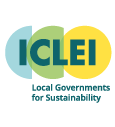Ann Arbor, U.S.
Bringing the circular economy to Ann Arbor’s food sector
About Ann Arbor
Ann Arbor is a hub of sustainability in Michigan and a model community for others. It is a bustling university town, culinary hotspot, and a tech hub with a walkable downtown that includes world-class arts and culture. Located in southeast Michigan’s Lower Peninsula, Ann Arbor lies at the center of a greater collection of communities in Washtenaw County. With so many thriving communities nearby, Ann Arbor has become a cultural melting pot and urban oasis. With a population of 123,000 and a GDP of 22,186 MM USD, Ann Arbor, Michigan is the home of the University of Michigan, a top-ranked public university. It is 55% rentals and has a median household income of $69,000. The City of Ann Arbor, or as residents affectionately call it “Tree Town”, is home to over 1.5 million trees and over 125 parks. The city has a Natural Areas Preservation, Parks, and Forestry departments that care for these trees and land, including thousands of acres of farmland and open space that has been preserved around the city.

